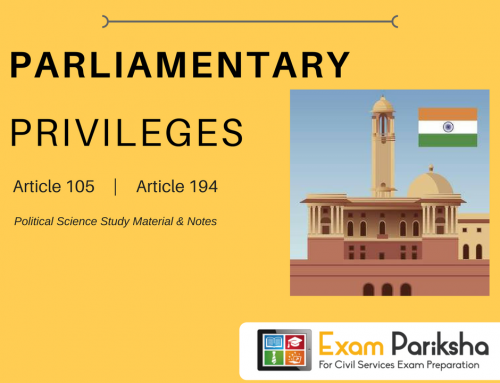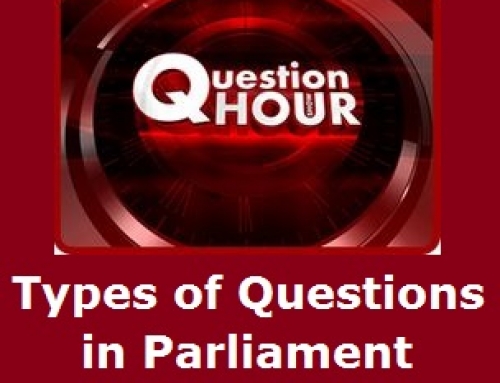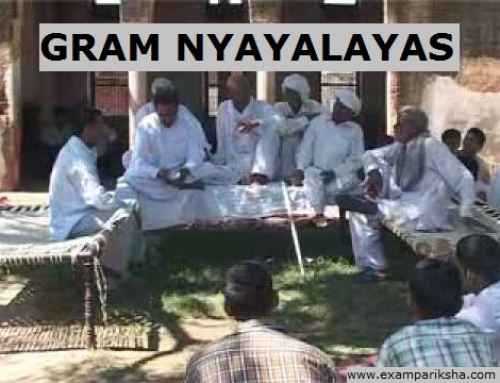It is mentioned in the Constitution of India that, each State shall have a Council of Ministers to aid and advise the Governor in the exercise of his functions. And the Chief Minister serves as the head of the government in the State. Therefore, the Council of Ministers along with the Chief Minister as its head, exercises real authority in the State Government.
Formation of the Council of Ministers
- The person who commands the majority support in the State Legislative Assembly (Vidhan Sabha) is appointed as the Chief Minister by the Governor.
- The Chief Minister advises the Governor to appoint other ministers of the Council of Ministers.
- A person who is not a member of the State legislature can also be appointed as a minister, but he/she ceases to hold ministerial office if he/she is not elected to the State legislature within six months of his/her appointment.
- The portfolios to the members of the Council are allocated by the Governor, on the advice of the Chief Minister.
Functions of the Chief Minister
The constitutional position of the Chief Minister is broadly similar to that of the Prime Minister of India. Chief Minister serves as the head of the Council of Ministers of the State. Hence, the Chief Minister plays an important role in the administration of the State. His functions are mentioned as follows:
- Chief Minister acts as the real executive of the State Government. Ministers are also appointed by the Governor on the advice of the Chief Minister. The Governor even allocates portfolios to these ministers on the advice of the Chief Minister.
- Chief Minister presides over the Cabinet meetings. He coordinates the functioning of different ministries in his/her state.
- He/she guides the functioning of the Cabinet according to their vision.
- Chief Minister plays an important role in framing the policies and laws of the State Government. Also the bills are introduced by the ministers in the State legislature with his/her prior approval.
- He/she is the chief spokesperson of the policies of his/her government, both inside and outside of the State Legislature.
- The Constitution provides that “the Chief Minister shall communicate all decisions of the Council of Ministers relating to the administration and the affairs of the State and proposals for legislation to the Governor.”
- The Chief Minister has to furnish information related to the administration of the State and also about the proposals for legislation to the Governor.
- “If the Governor requires, the Chief Minister has to submit for consideration of the Council of Ministers any matter on which a decision has been taken by a minister but which has not been considered by the Cabinet.”
- The Chief Minister is the sole link of communication between the Cabinet and the Governor. The Governor has the right to be informed by the Chief Minister about the decisions taken by the Council of Ministers.
These above mentioned functions show that the real authority in the state administration is vested with the Council of Ministers headed by the Chief Minister. Therefore, the Council of Ministers is the real executive of the State. It must be noted that the position of the Council of Ministers largely depends upon the strength of the ruling party in the State Assembly and also on the personality of the Chief Minister.
Relationship of the Governor with the Chief Minister:
- Since the Governor is the constitutional head of the State, all executive actions in the State are taken in his name.
- The Governor appoints the Chief Minister and other ministers in the Council of ministers.
- The Governor is hence, responsible for smooth running of the State administration because its his/her duty to oversee that the State administration is carried according to the provisions mentioned in the Constitution.
- If the Governor finds that the constitutional machinery of the State has broken down or the administration cannot be carried in accordance with the provisions of the Constitution, he/she can recommend proclaimation of emergency in the State to the President.
- The Governor in his/her report can advise the President to impose President’s Rule in the State. If the President agres with the Governor, he/she is empowered to declare emergency under Article 356, popularly known as President’s Rule in the State.
- After the proclamation, the State comes under the control of the Central Government and the Governor acts as the Centre’s agent. The Council of Ministers stands dismissed and Assembly (Vidhan Sabha) is dissolved or suspended.
- When the Chief Minister enjoys the confidence of the State legislature, the Governor’s capacity to exercise his/her discretionary powers gets limited to a large extent. In such situation, the Chief Minister acts as the real head of the State administration and the Governor acts as the constitutional head only.
Conclusion:
- The Chief Minister acts as the real head of the Government at the State level.
- The Governor appoints the Chief Minister based on the majority support in Legislature.
- Other Ministers of the Council are appointed by the Governor by the aid and advice of the Chief Minister.
- The Chief Minister is the presiding authority over the Cabinet meetings. Therefore, he/she is responsible for laying down the policies of the State Government.
- He/she acts as the sole link between his Council of ministers and the Governor.
- He/she coordinates the functioning of different ministries in the State government.
- The Chief Minister communicates the concerns of the State to the Union government.





